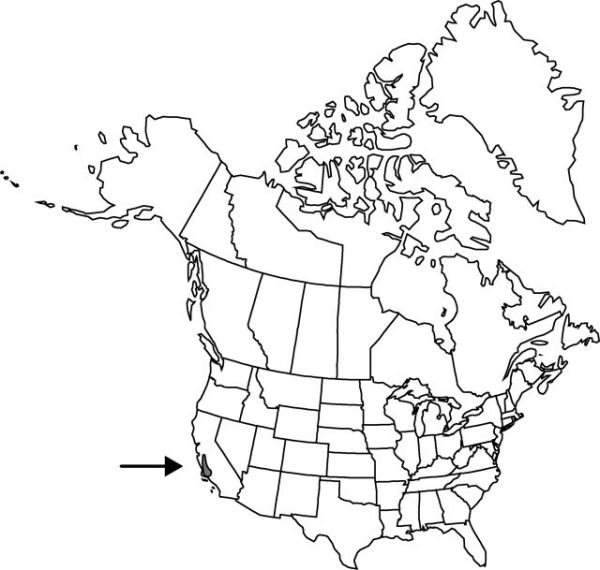Allium diabolense
Aliso 13: 425. 1992.
Bulbs 1–3, not clustered on stout, primary rhizomes, ovoid to ± globose, 1–1.6 × 0.9–1.6 cm; outer coats enclosing 1 or more bulbs, reddish-brown, membranous, lacking cellular reticulation or cells arranged in 2–3 rows proximal to roots, ± quadrate, without fibers; inner coats pale-brown to white, cells obscure, quadrate. Leaves persistent, withering from apex by anthesis, 1, basally sheathing, sheath not extending much above soil surface; blade solid, terete, 10–30 (–40) cm × 1–3 mm. Scape persistent, solitary, erect, solid, terete, 7–20 (–30) cm × 1–3 mm. Umbel persistent, erect, compact to ± loose, 10–50-flowered, hemispheric, bulbils unknown; spathe bracts persistent, 2–3, 8–10-veined, lanceolate, ± equal, apex acuminate to long-acuminate. Flowers campanulate, 6–10 mm; tepals erect, white or tinged pink with dark red midveins, lanceolate to ovate, ± equal, becoming papery in fruit, margins entire, apex obtuse to acute or apiculate, not conspicuously recurved at tip; stamens included; anthers yellow; pollen yellow; ovary crested; processes 6, prominent, ± triangular, margins erose to ± laciniate; style linear, equaling stamens; stigma capitate, 3-lobed, lobes slender, recurved; pedicel 7–20 mm. Seed-coat dull; cells minutely roughened. 2n = 14.
Phenology: Flowering mid Apr–Jun.
Habitat: Serpentine clay soils
Elevation: 500–1500 m
Discussion
Allium diabolense is known only from the southern Coast Ranges and western Transverse Ranges.
Selected References
None.
Lower Taxa
"thicker" is not a number."broad" is not a number.
